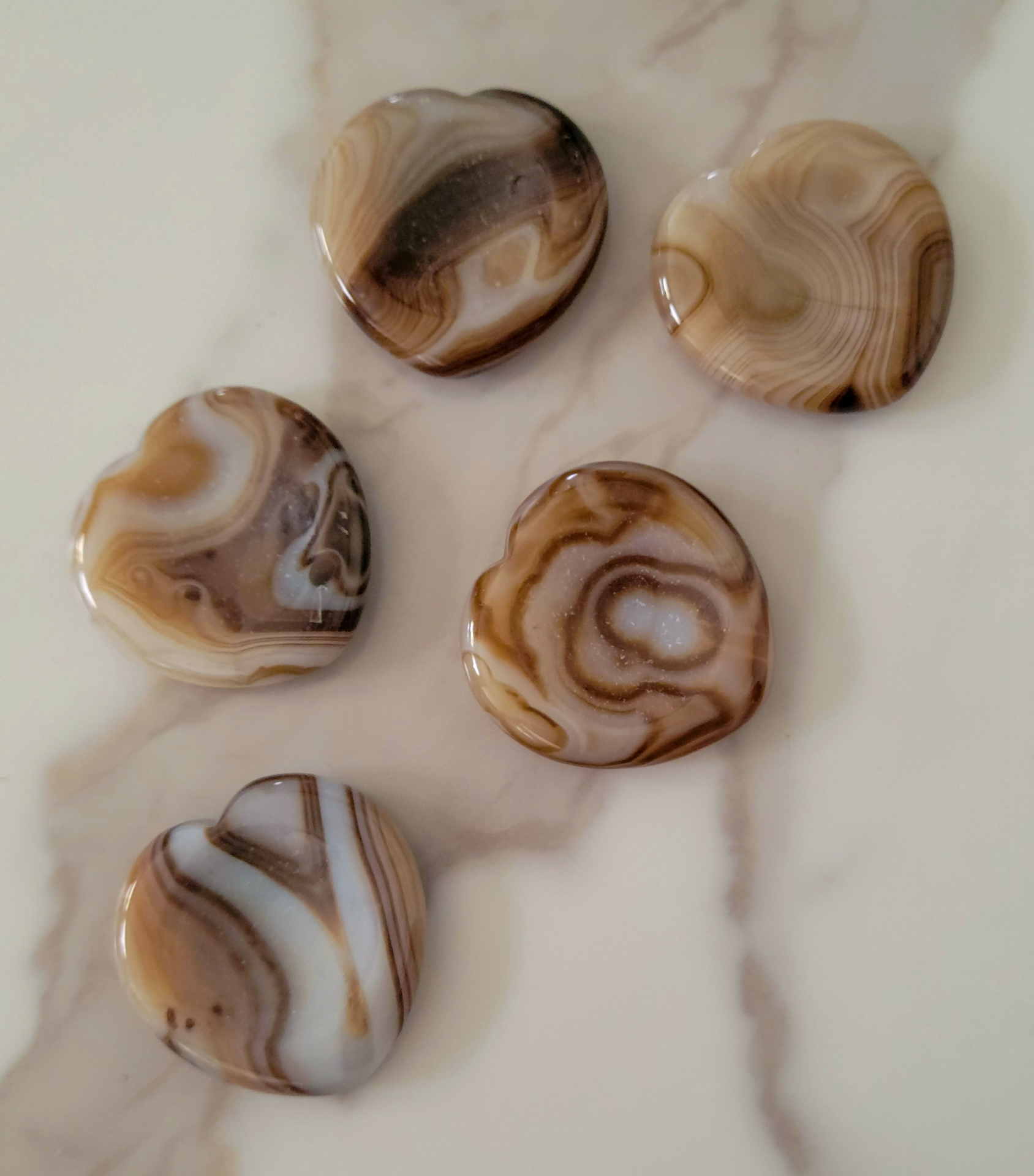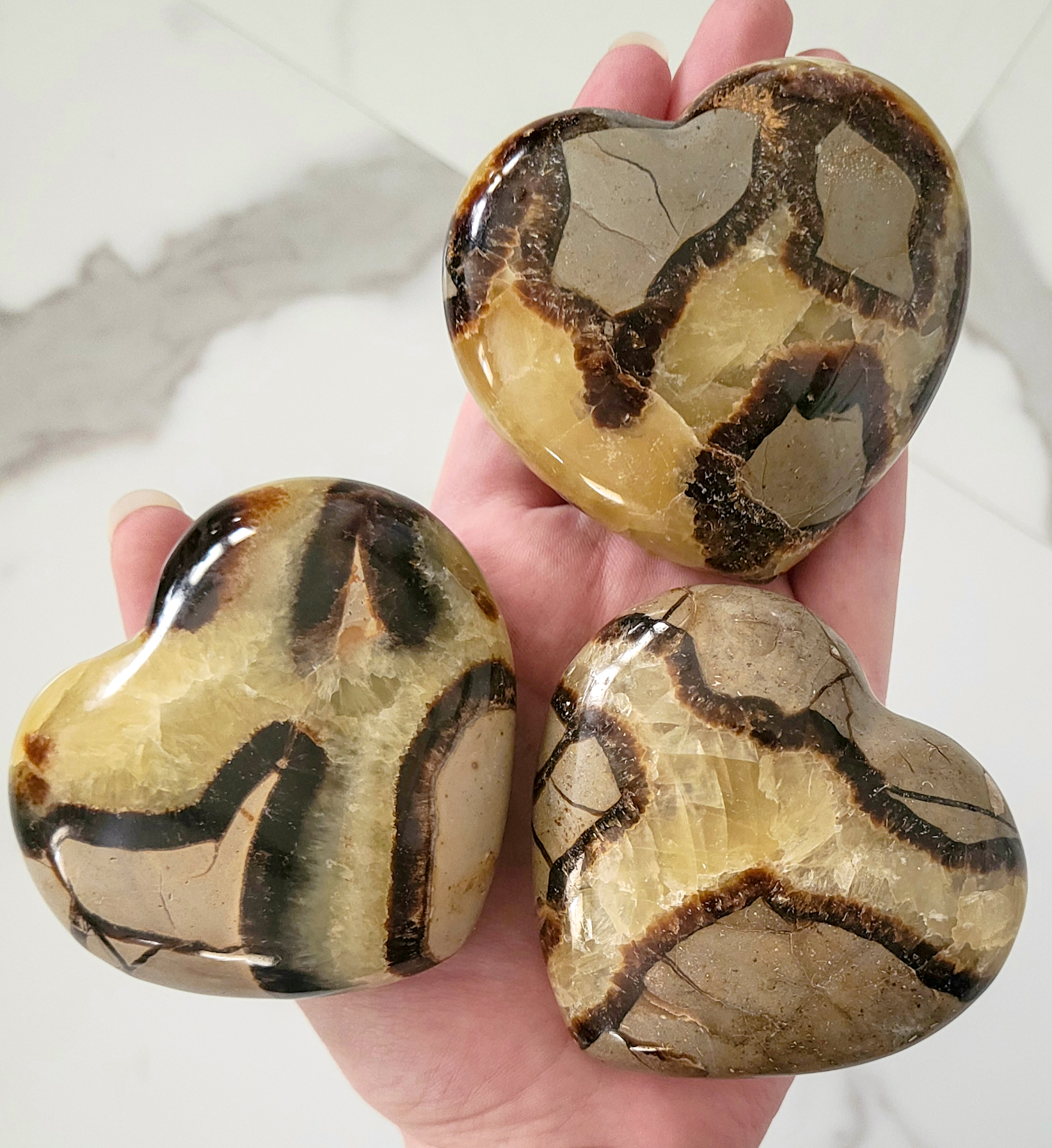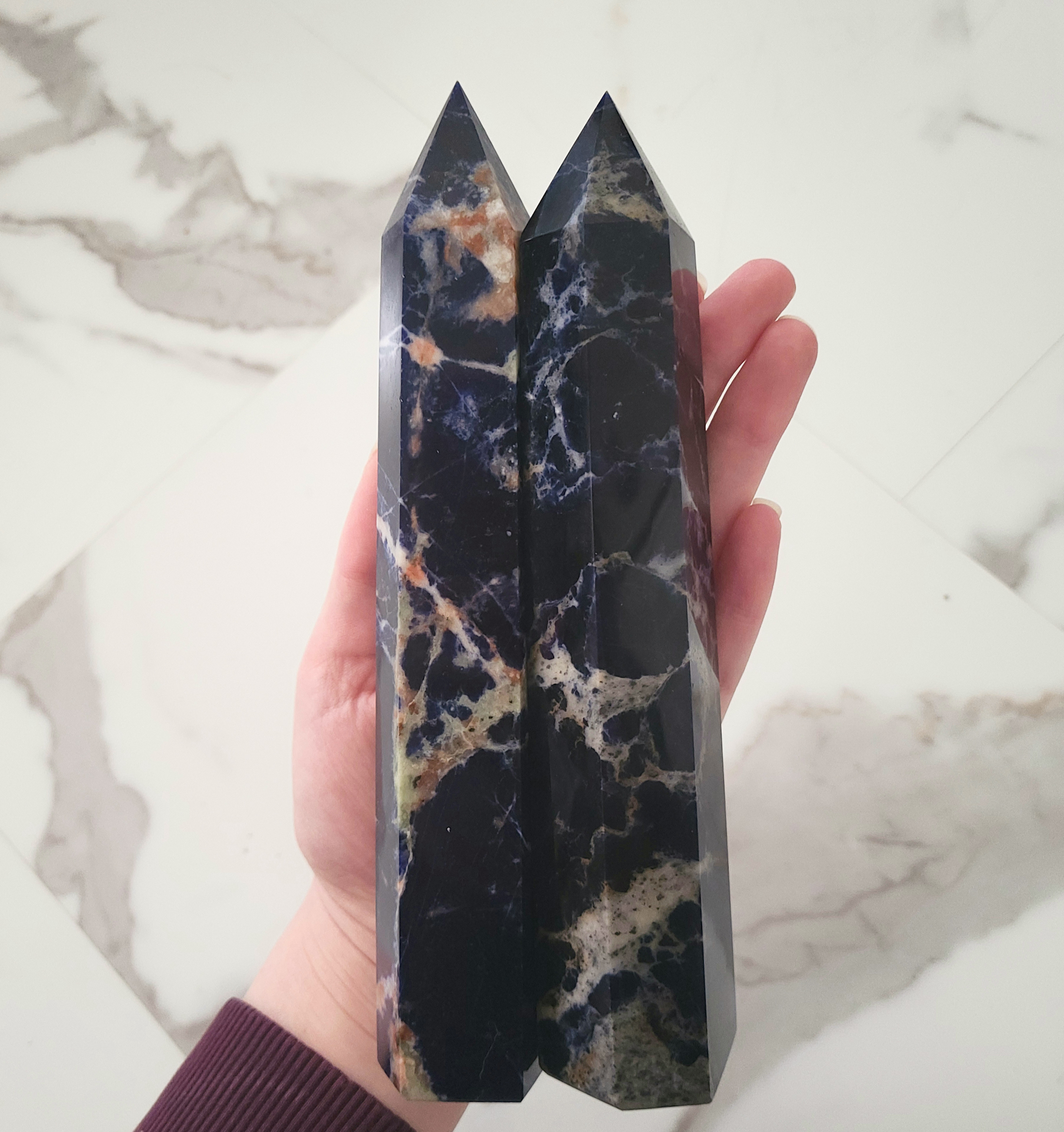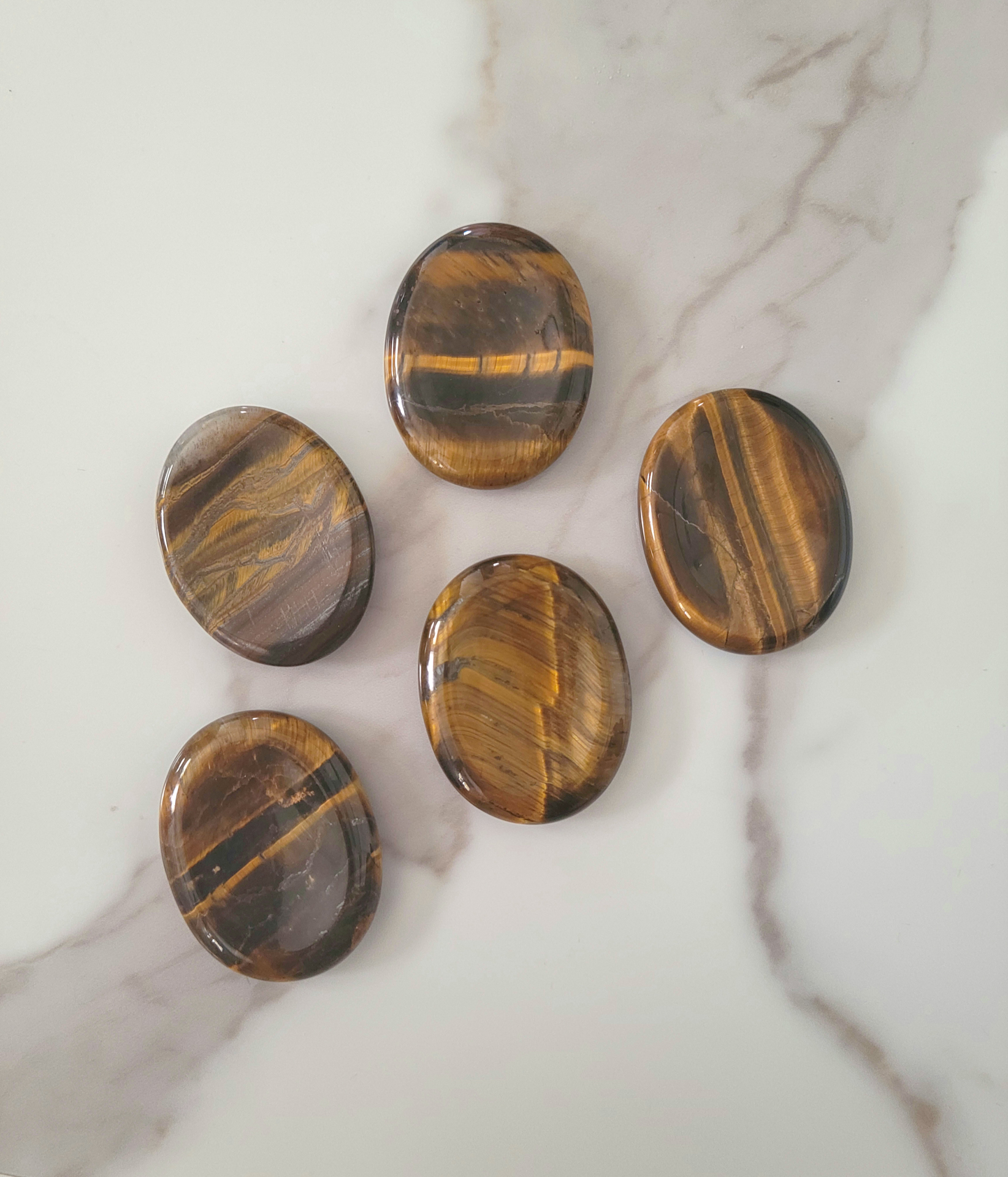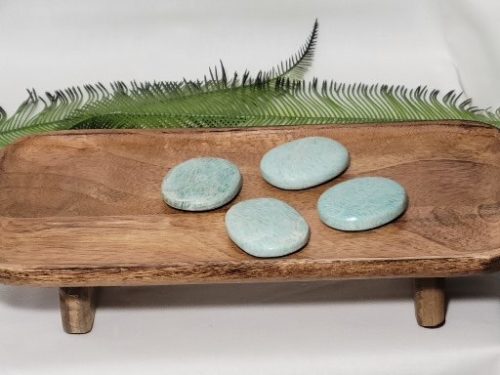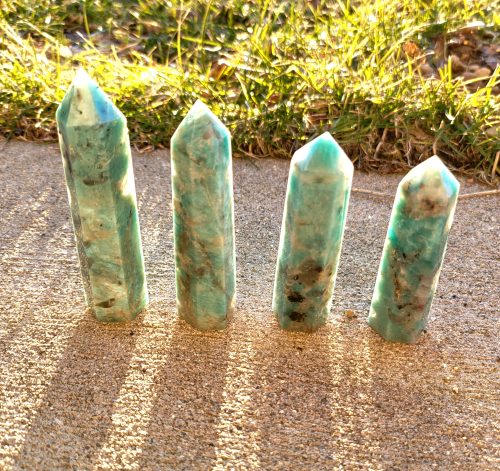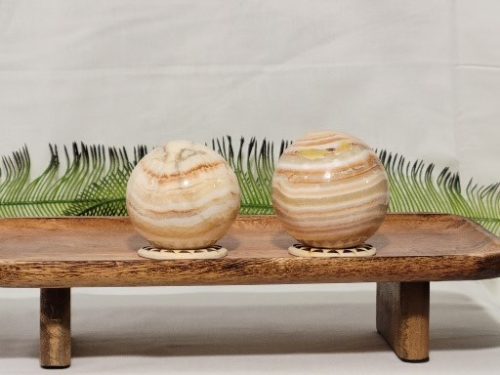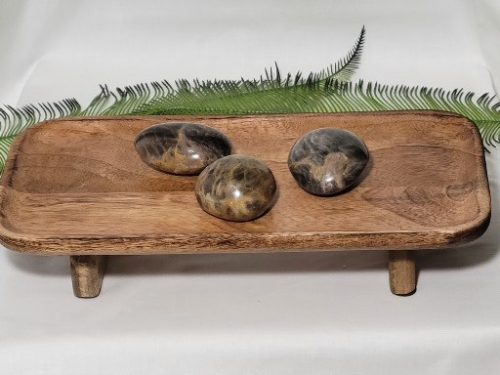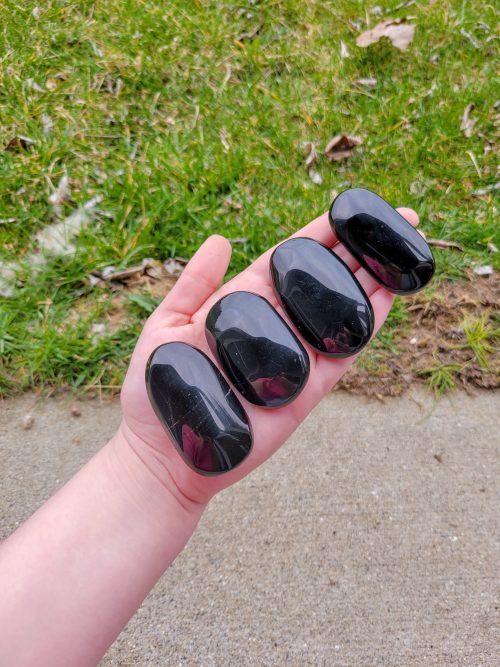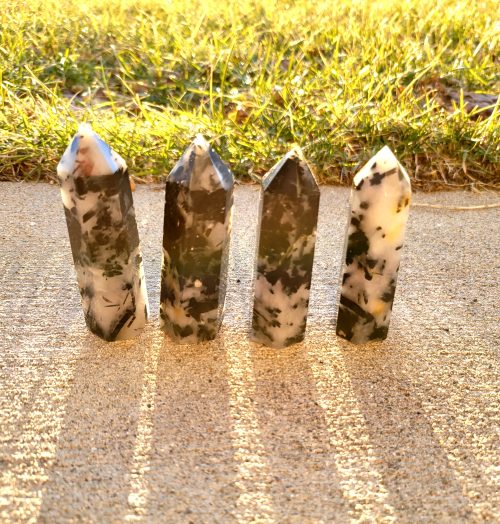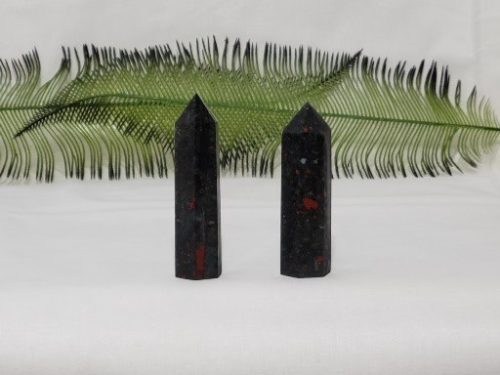-
4 x 1 x 4cm Sardonyx combines alternating layers of sard and onyx to create a reddish zebra-striped gemstone with white bands. Onyx is a banded variety of the oxide mineral chalcedony. Onyx and Agate are similar in that they are both varieties of layered chalcedony. The difference between the two is that agate has curved banding and onyx has parallel banding. The colors of the banding range from virtually every color possibility.Onyx is mainly found in Brazil, India, Madagascar, Mexico, Peru, and USA. ***Due to natural variations in stones, appearance will vary***
-
8 x 2 x 8cm Septarian concretions are concretions containing cavities or cracks, called septaria. The septaria are the calcite (yellow) filled cracks at the center of the rock, indicating where the center of the concretions have shrunk, possibly during dehydration during its transformative journey over a long period of time. Septarian can be found mostly in the Gulf of Mexico and Madagascar. ***Due to natural variations in stones, appearance will vary***
-
4 x 3 x 20cm Sodalite is a rare mineral formed inside igneous rocks crystalized as a result of sodium-rich magma. The blue color comes from the rock that Sodalite is formed in; nepheline syenite, trachyte, and phonolite. Although the sodalite-bearing rock is rare, it can most commonly be found in the US, Canada, and Africa. ***Due to natural variations in stones, the appearance will vary***
-
4 x 1 x 5cm Tiger's eye is a semiprecious stone that is formed when parallel veins of crocidolite fibers are first altered to iron oxides and then replaced by silica. As a result it is more opaque, and creates a rich yellow to brown color. Tiger Eye can be found in Australia, Burma, United States, Brazil, China, and many other countries. ***Due to natural variations in stones, the appearance will vary***
-
4cm - 5cm Amazonite is a type of feldspar that gets its name from the Amazon River. Geologists once thought the color came from the oxides that come off of copper. In recent studies, geologists suggest this stone gets its color from the lead and water contents that are found within its contents. Originally found in Brazil, these beautiful rocks can also be found in Madagascar. There have also been findings of this crystal in Colorado, United States. ***Due to natural variations in stones, the appearance will vary***
-
9cm - 10cm Tall Amazonite is a type of feldspar that gets its name from the Amazon River. Geologists once thought the color came from the oxides that come off of copper. In recent studies, geologists suggest this stone gets its color from the lead and water contents that are found within its contents. Originally found in Brazil, these beautiful rocks can also be found in Madagascar. There have also been findings of this crystal in Colorado, United States. ***Due to natural variations in stones, the appearance will vary***
-
8cm Tall Amazonite is a type of feldspar that gets its name from the Amazon River. Geologists once thought the color came from the oxides that come off of copper. In recent studies, geologists suggest this stone gets its color from the lead and water contents that are found within its contents. Originally found in Brazil, these beautiful rocks can also be found in Madagascar. There have also been findings of this crystal in Colorado, United States. ***Due to natural variations in stones, the appearance will vary***
-
60mm - 70mm Calcite is a mineral when originally formed is colorless and opaque and can come in many different forms of translucency. It gets its beautiful colors and banding from impurities in the rocks the specimen is formed in. Calcite gets its name from the water within the mineral being rich in calcium. This soft mineral can be found all over the world; mainly in shallow marine settings such as hydrothermal veins and hot spring deposits. Many marine life species, such as crabs and coral, rely on calcite to form their shells. ***Due to natural variations in stones, the appearance will vary***
-
6cm - 7cm Black moonstone is a silicate gemstone and is famous for its shimmering effect when moved in sunlight. It is believed that these stones resemble the moon when they show their shimmer. Most of the black moonstones have swirls and lines of tan, gray, and peach. Moonstones come in a variety of colors; black, pink, green, white, brown, and grey. This mineral was originally discovered in Madagascar but can also be found in Armenia, Australia, Mexico, and many other countries. ***Due to natural variations in stones, the appearance will vary***
-
5.5cm Wide Obsidian, igneous rocks occurring as a natural glass formed by the rapid cooling of viscous lava from volcanoes. Obsidian is about 65 to 80 percent silica and less than 1 percent water. This glass-like mineral is harder than window glass! Black obsidian is typically black but can have red inclusions due to iron and hematite. Gas bubbles can also get trapped inside this mineral and create either a gold or silver sheen beneath the surface. Obsidian is mainly found near the west coast of the United States including Hawaii and Alaska. ***Due to natural variations in stones, appearance will vary***
-
8cm Tall Tourmaline is a complex family of minerals composed of aluminum borosilicate mixed with magnesium, iron or other metals. Tourmaline can come in a variety of colors depending on its proportion of these components. These colors are red, pink, yellow, brown, green, blue, black, or violet colors. This mineral can be found mainly in Brazil and many parts of Africa. ***Due to natural variations in stones, appearance will vary***
-
10cm Tall Bloodstone is formed, like many other minerals, when molten rock rises to the Earth's surface and cools. Then as gasses escape and settle on the rock's surface, it leaves little pockets on the surface of the mineral. The green color in Bloodstone comes from Chlorite and Amphibole. The red spots are iron oxide deposits where the gasses rose. Most Bloodstone is found in India, Australia, Brazil, and Madagascar. ***Due to natural variations in stones, the appearance will vary***

